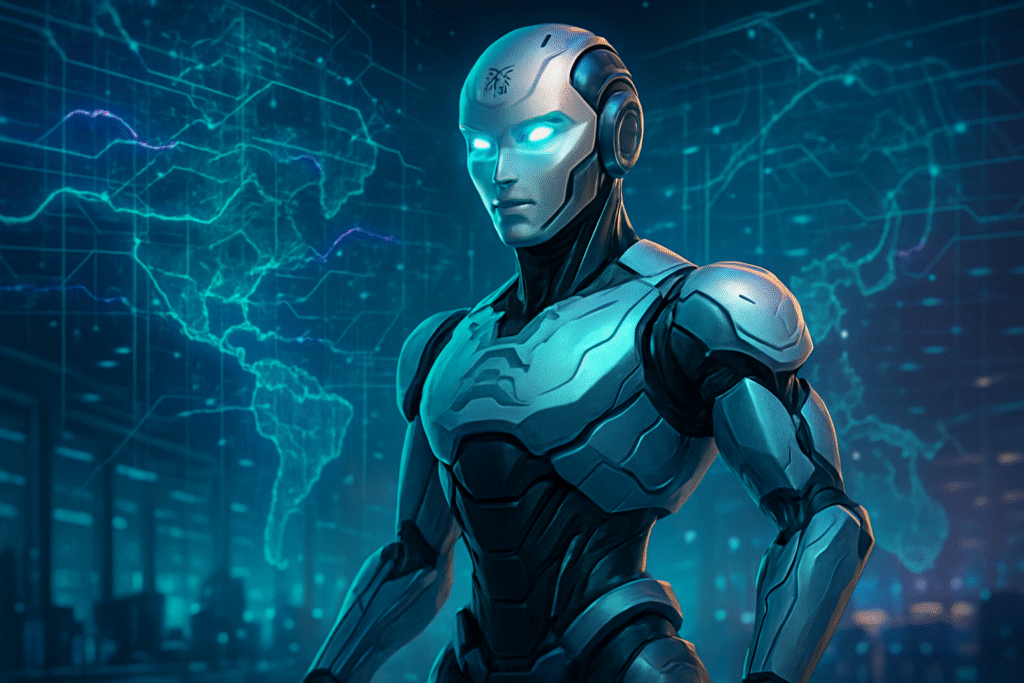
The global technology landscape is on the cusp of a profound transformation, spearheaded by the rapid and ambitious advancements in Chinese humanoid robotics. Once the exclusive domain of science fiction, human-like robots are now becoming a tangible reality, with China emerging as a dominant force in their development and mass production. This surge is not merely a technological marvel; it represents a strategic pivot that promises to redefine manufacturing, service industries, and the very fabric of global labor markets. With aggressive government backing and significant private investment, Chinese firms are rolling out sophisticated humanoid models at unprecedented speeds and competitive price points, signaling a new era of embodied AI.
The immediate significance of this robotic revolution is multifaceted. On one hand, it offers compelling solutions to pressing global challenges such as labor shortages and the demands of an aging population. On the other, it ignites crucial discussions about job displacement, the future of work, and the ethical implications of increasingly autonomous machines. As China aims for mass production of humanoid robots by 2025, the world watches closely to understand the full scope of this technological leap and its impending impact on economies and societies worldwide.
Engineering the Future: The Technical Prowess Behind China's Humanoid Surge
China's rapid ascent in humanoid robotics is underpinned by a confluence of significant technological breakthroughs and strategic industrial initiatives. The nation has become a hotbed for innovation, with companies not only developing advanced prototypes but also moving swiftly towards mass production, a critical differentiator from many international counterparts. The government's ambitious target to achieve mass production of humanoid robots by 2025 underscores the urgency and scale of this national endeavor.
Several key players are at the forefront of this robotic revolution. Unitree Robotics, for instance, made headlines in 2023 with the launch of its H1, an electric-driven humanoid that set a world record for speed at 3.3 meters per second and demonstrated complex maneuvers like backflips. More recently, in May, Unitree introduced the G1, an astoundingly affordable humanoid priced at approximately $13,600, significantly undercutting competitors like Tesla's (NASDAQ: TSLA) Optimus. The G1 boasts precise human-like hand movements, expanding its utility across various dexterous tasks. Another prominent firm, UBTECH Robotics (HKG: 9880), has deployed its Walker S industrial humanoid in manufacturing settings, where its 36 high-performance servo joints and advanced sensory systems have boosted factory efficiency by over 120% in partnerships with automotive and electronics giants like Zeekr and Foxconn (TPE: 2354). Fourier Intelligence also entered the fray in 2023 with its GR-1, a humanoid specifically designed for medical rehabilitation and research.
These advancements are powered by significant strides in several core technical areas. Artificial intelligence, machine learning, and large language models (LLMs) are enhancing robots' ability to process natural language, understand context, and engage in more sophisticated, generative interactions, moving beyond mere pre-programmed actions. Hardware innovations are equally crucial, encompassing high-performance servo joints, advanced planetary roller screws for smoother motion, and multi-modal tactile sensing for improved dexterity and interaction with the physical world. China's competitive edge in hardware is particularly noteworthy, with reports indicating the capacity to produce up to 90% of humanoid robot components domestically. Furthermore, the establishment of large-scale "robot boot camps" is generating vast amounts of standardized training data, addressing a critical bottleneck in AI development and accelerating the learning capabilities of these machines. This integrated approach—combining advanced AI software with robust, domestically produced hardware—distinguishes China's strategy and positions it as a formidable leader in the global humanoid robotics race.
Reshaping the Corporate Landscape: Implications for AI Companies and Tech Giants
The rapid advancements in Chinese humanoid robotics are poised to profoundly impact AI companies, tech giants, and startups globally, creating both immense opportunities and significant competitive pressures. Companies directly involved in the development and manufacturing of humanoid robots, particularly those based in China, stand to benefit most immediately. Firms like Unitree Robotics, UBTECH Robotics (HKG: 9880), Fourier Intelligence, Agibot, Xpeng Robotics (NYSE: XPEV subsidiary), and MagicLab are well-positioned to capitalize on the burgeoning demand for embodied AI solutions across various sectors. Their ability to mass-produce cost-effective yet highly capable robots, such as Unitree's G1, could lead to widespread adoption and significant market share gains.
For global tech giants and major AI labs, the rise of Chinese humanoid robots presents a dual challenge and opportunity. Companies like Google (NASDAQ: GOOGL), Amazon (NASDAQ: AMZN), and Microsoft (NASDAQ: MSFT), which are heavily invested in AI research and cloud infrastructure, will find new avenues for their AI models and services to be integrated into these physical platforms. However, they also face intensified competition, particularly from Chinese firms that are rapidly closing the gap, and in some cases, surpassing them in hardware integration and cost-efficiency. The competitive implications are significant; the ability of Chinese manufacturers to control a large portion of the humanoid robot supply chain gives them a strategic advantage in terms of rapid prototyping, iteration, and cost reduction, which international competitors may struggle to match.
The potential for disruption to existing products and services is substantial. Industries reliant on manual labor, from manufacturing and logistics to retail and hospitality, could see widespread automation enabled by these versatile robots. This could disrupt traditional service models and create new ones centered around robotic assistance. Startups focused on specific applications for humanoid robots, such as specialized software, training, or integration services, could also thrive. Conversely, companies that fail to adapt to this new robotic paradigm, either by integrating humanoid solutions or by innovating their own embodied AI offerings, risk falling behind. The market positioning will increasingly favor those who can effectively combine advanced AI with robust, affordable, and scalable robotic hardware, a sweet spot where Chinese companies are demonstrating particular strength.
A New Era of Embodied Intelligence: Wider Significance and Societal Impact
The emergence of advanced Chinese humanoid robotics marks a pivotal moment in the broader AI landscape, signaling a significant acceleration towards "embodied intelligence" – where AI is seamlessly integrated into physical forms capable of interacting with the real world. This trend moves beyond purely digital AI applications, pushing the boundaries of what machines can perceive, learn, and accomplish in complex, unstructured environments. It aligns with a global shift towards creating more versatile, human-like robots that can adapt and perform a wide array of tasks, from delicate assembly in factories to empathetic assistance in healthcare.
The impacts of this development are far-reaching, particularly for global labor markets. While humanoid robots offer a compelling solution to burgeoning labor shortages, especially in countries with aging populations and declining birth rates, they also raise significant concerns about job displacement. Research on industrial robot adoption in China has already indicated negative effects on employment and wages in traditional industries. With targets for mass production exceeding 10,000 units by 2025, the potential for a transformative, and potentially disruptive, impact on China's vast manufacturing workforce is undeniable. This necessitates proactive strategies for workforce retraining and upskilling to prepare for a future where human roles shift from manual labor to robot oversight, maintenance, and coordination.
Beyond economics, ethical considerations also come to the forefront. The increasing autonomy and human-like appearance of these robots raise questions about human-robot interaction, accountability, and the potential for societal impacts such as job polarization and social exclusion. While the productivity gains and economic growth promised by robotic integration are substantial, the speed and scale of deployment will heavily influence the socio-economic adjustments required. Comparisons to previous AI milestones, such as the breakthroughs in large language models or computer vision, reveal a similar pattern of rapid technological advancement followed by a period of societal adaptation. However, humanoid robotics introduces a new dimension: the physical embodiment of AI, which brings with it unique challenges related to safety, regulation, and the very definition of human work.
The Road Ahead: Anticipating Future Developments and Challenges
The trajectory of Chinese humanoid robotics points towards a future where these machines become increasingly ubiquitous, versatile, and integrated into daily life and industry. In the near-term, we can expect to see continued refinement in dexterity, locomotion, and AI-driven decision-making. The focus will likely remain on enhancing the robots' ability to perform complex manipulation tasks, navigate dynamic environments, and interact more naturally with humans through improved perception and communication. The mass production targets set by the Chinese government suggest a rapid deployment across manufacturing, logistics, and potentially service sectors, leading to a surge in real-world operational data that will further accelerate their learning and development.
Long-term developments are expected to push the boundaries even further. We can anticipate significant advancements in "embodied intelligence," allowing robots to learn from observation, adapt to novel situations, and even collaborate with humans in more intuitive and sophisticated ways. Potential applications on the horizon include personalized care for the elderly, highly specialized surgical assistance, domestic chores, and even exploration in hazardous or remote environments. The integration of advanced haptic feedback, emotional intelligence, and more robust general-purpose AI models will enable robots to tackle an ever-wider range of unstructured tasks. Experts predict a future where humanoid robots are not just tools but increasingly capable collaborators, enhancing human capabilities across almost every domain.
However, significant challenges remain. Foremost among these is the need for robust safety protocols and regulatory frameworks to ensure the secure and ethical operation of increasingly autonomous physical robots. The development of truly general-purpose humanoid AI that can seamlessly adapt to diverse tasks without extensive reprogramming is also a major hurdle. Furthermore, the socio-economic implications, particularly job displacement and the need for large-scale workforce retraining, will require careful management and policy intervention. Addressing public perception and fostering trust in these advanced machines will also be crucial for widespread adoption. What experts predict next is a period of intense innovation and deployment, coupled with a growing societal dialogue on how best to harness this transformative technology for the benefit of all.
A New Dawn for Robotics: Key Takeaways and Future Watch
The rise of Chinese humanoid robotics represents a pivotal moment in the history of artificial intelligence and automation. The key takeaway is the unprecedented speed and scale at which China is developing and preparing to mass-produce these advanced machines. This is not merely about incremental improvements; it signifies a strategic shift towards embodied AI that promises to redefine industries, labor markets, and the very interaction between humans and technology. The combination of ambitious government backing, significant private investment, and crucial breakthroughs in both AI software and hardware manufacturing has positioned China as a global leader in this transformative field.
This development’s significance in AI history cannot be overstated. It marks a transition from AI primarily residing in digital realms to becoming a tangible, physical presence in the world. While previous AI milestones focused on cognitive tasks like language processing or image recognition, humanoid robotics extends AI’s capabilities into the physical domain, enabling machines to perform dexterous tasks and navigate complex environments with human-like agility. This pushes the boundaries of automation beyond traditional industrial robots, opening up vast new applications in service, healthcare, and even personal assistance.
Looking ahead, the long-term impact will be profound, necessitating a global re-evaluation of economic models, education systems, and societal structures. The dual promise of increased productivity and the challenge of potential job displacement will require careful navigation. What to watch for in the coming weeks and months includes further announcements from key Chinese robotics firms regarding production milestones and new capabilities. Additionally, observe how international competitors respond to China's aggressive push, whether through accelerated R&D, strategic partnerships, or policy initiatives. The regulatory landscape surrounding humanoid robots, particularly concerning safety, ethics, and data privacy, will also be a critical area of development. The era of embodied intelligence is here, and its unfolding narrative will undoubtedly shape the 21st century.
This content is intended for informational purposes only and represents analysis of current AI developments.
TokenRing AI delivers enterprise-grade solutions for multi-agent AI workflow orchestration, AI-powered development tools, and seamless remote collaboration platforms.
For more information, visit https://www.tokenring.ai/.





